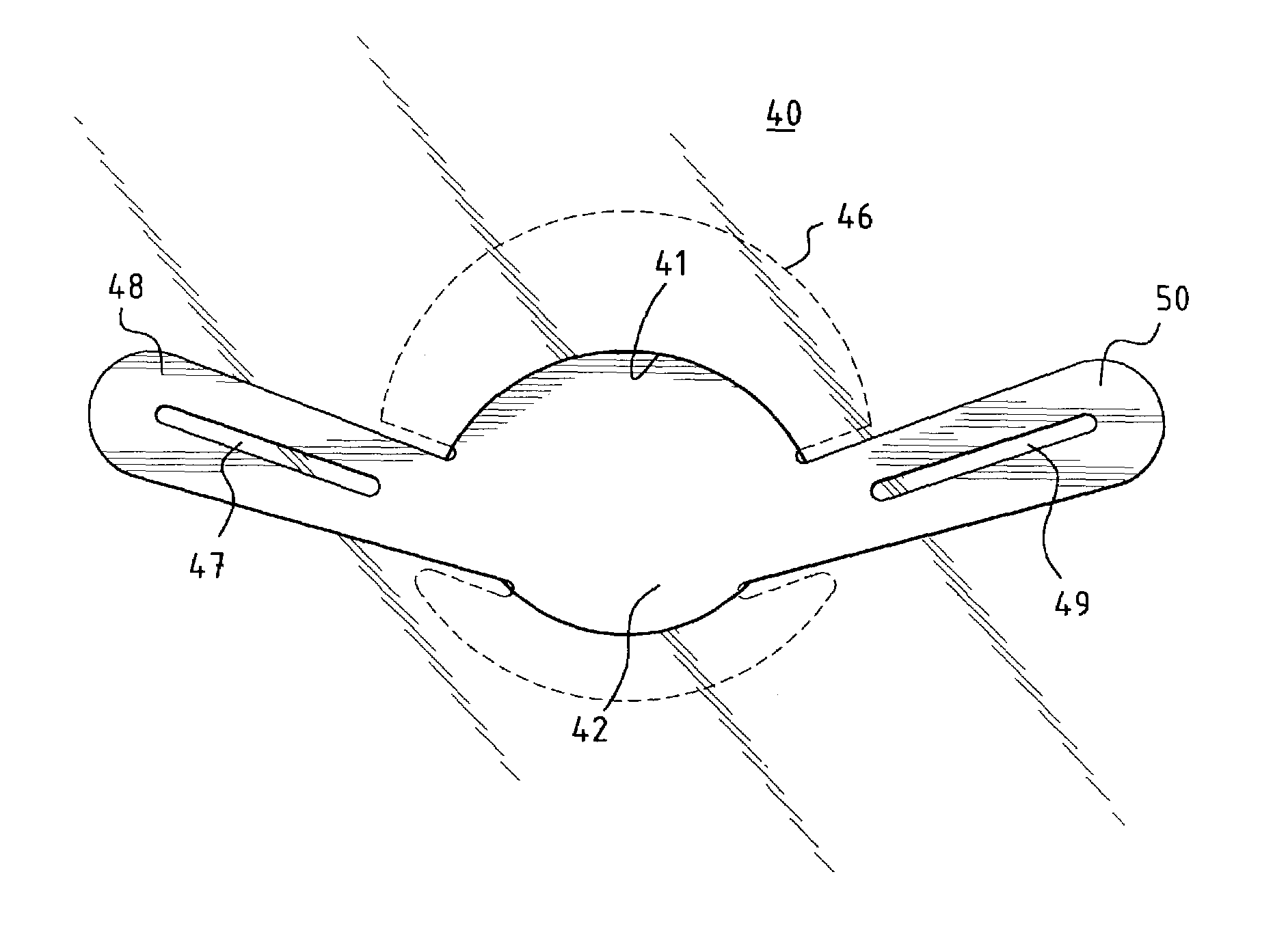One-piece minicapsulorhexis valve
a technology of minicapsulorhexis and valve body, which is applied in the field of unitary minicapsulorhexis valve, can solve the problems of damage to corneal tissues, inability to accept gummy products with low resilience, and impair the function of synthetic lenses, and achieve the effect of preventing leakag
- Summary
- Abstract
- Description
- Claims
- Application Information
AI Technical Summary
Benefits of technology
Problems solved by technology
Method used
Image
Examples
Embodiment Construction
[0036]The present invention now will be described more fully hereinafter with reference to the accompanying drawings, in which preferred embodiments of the invention are shown. This invention may, however, be embodied in many different forms and should not be construed as limited to the embodiments set forth herein; rather, these embodiments are provided so that this disclosure will be thorough and complete, and will fully convey the scope of the invention to those skilled in the art. Like numbers refer to like elements throughout.
[0037]In a preferred embodiment of the invention, as shown in FIG. 1a, a unitary MCV valve device 10 comprises a single, thin, flexible, and preferably elastic membrane shaped such that it has a discoid portion 12 and substantially teardrop-shaped retainer arms 14, 16. Substantially circular apertures 18, 20 in arms 14, 16 respectively assist in the positioning of the device. FIG. 1b shows a cross-sectional side view of the MCV of FIG. 1a across line A—A. ...
PUM
 Login to View More
Login to View More Abstract
Description
Claims
Application Information
 Login to View More
Login to View More - R&D
- Intellectual Property
- Life Sciences
- Materials
- Tech Scout
- Unparalleled Data Quality
- Higher Quality Content
- 60% Fewer Hallucinations
Browse by: Latest US Patents, China's latest patents, Technical Efficacy Thesaurus, Application Domain, Technology Topic, Popular Technical Reports.
© 2025 PatSnap. All rights reserved.Legal|Privacy policy|Modern Slavery Act Transparency Statement|Sitemap|About US| Contact US: help@patsnap.com



